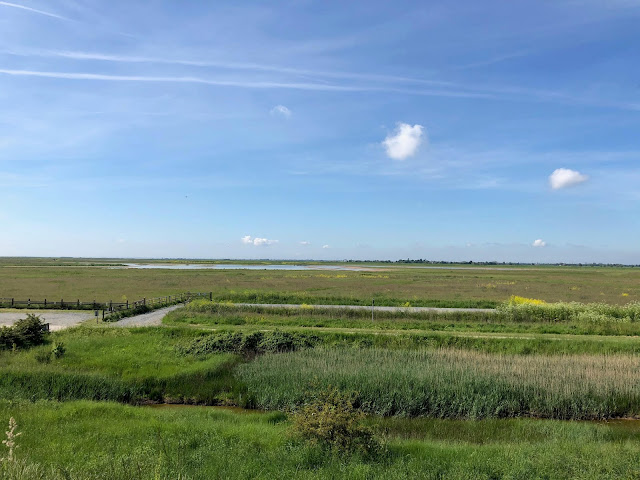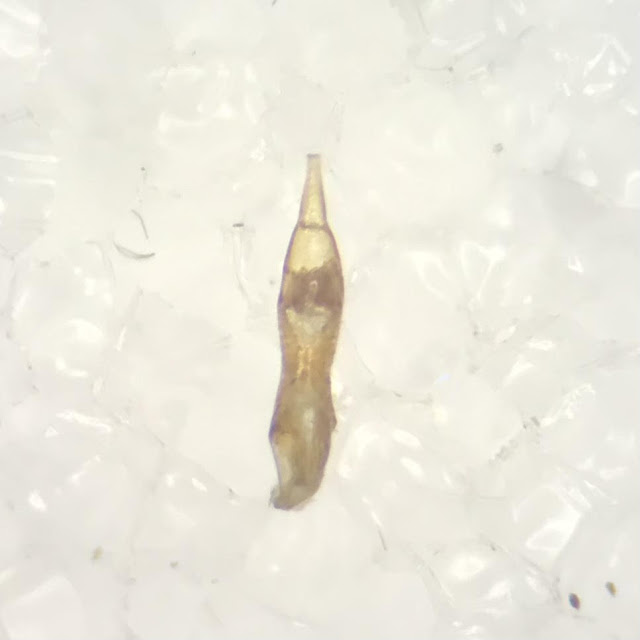Friday, December 31, 2021
They talk of days for which they sit and wait
Thursday, December 2, 2021
We can beat the sun as long as we keep moving
Trevor James was a bit of a natural history legend. He was Hertfordshire's long-time recorder for flora and beetles and an outstanding all-round naturalist. He produced the epic book Beetles of Hertfordshire which is the county account against which all others are and will be measured, all so far falling well short.
I never had the pleasure of meeting Trevor and he sadly died last year. You can read an obituary here. Whilst browsing Pemberley books recently I discovered that some of Trevor's beetle library was being sold off. I managed to pick up a couple of out of print books that I had been looking for, these particular ones having the added bonus of having been Trevor's and containing his book plates.
I quite like the idea that books pass between people with similar interests and through them a connection of sorts is made. If looked after, I could conceivably pass them on again when I shuffle off this mortal coil, which is both a reassuring thing and also an alarming one, as there are still bloody loads of beetles still to see!
The post title comes from this absolutely belter from Maximo Park. Very few people capture a story in a pop song the way Paul Smith does.
Sunday, November 21, 2021
Stay out super late tonight
So back in May (and it now seems like a lot longer ago) I spent a few days up on Anglesey in north west Wales. The reason: to do some water beetle surveys as part of my RSPB sabbatical.
What? (I hear you say)....... well, after 5 years continuous work at the RSPB you are allowed a sabbatical, to gain new skills or put your current ones to some other use for the organisation. It's a great thing to have and I'd been fantasising about mine since I started. However, Covid got in the way of my original plans of something on one of the Scottish Islands and so rather than delay I decided to make the most of what other opportunities there were. Hence some time on Anglesey, learning about water beetle assemblages and trying to add to the knowledge of one particular site.
That bit will be for another day/post once I finish the samples but whilst there we stayed at South Stack reserve, somewhere I hadn't visited since the summer of 1982. Things had changed and moved on since then, both for the reserve and for me.
 |
| There's a great new visitor centre just opened. Well worth a visit. |
 |
| Close cropped, cliff top vegetation. |
 |
| South Stack lighthouse at sunset |
 |
| Walking the paths, head down, head torch on. |
 |
| Psilothrix viridicoerulea |
Finally, for now. I'll end with a new one from my favourite beetle family. This little fella was running around my sample tray with its abdomen in the air like a tiny pissed off Devil's Coach horse. This is the aleoch Encephalus complicans and brilliantly for one of this group easy to identify.
The post title comes from The National's Fake Empire. A band that I was really into a decade or so ago but have to admit to having not listened to the last couple of albums they've put out. Something I should really rectify.
Thursday, November 4, 2021
If you're fond of sand dunes and salty air
All the way back in May I paid a visit to the dunes at Aberffraw on Anglesey in north-west Wales with fellow beetler, Andy.
The sun was mainly out and we spent a few hours pootling around the tussocks and dune slacks. It was one of the days where beetles were on the move and many had become trapped in the ever moving pockets of sand on the steeper, vegetation-free parts of the dunes.
Weevils were one of the most represented groups with several of the usual suspects and a few new species for me. First up was a species that I've wanted to see for a while, the slightly bizarre-looking Orobitis cyanea. Basically a tiny violet-black pea with long legs. Associated with violets in grassland and open areas, a few of these were stuck on the escalators of cascading sand.
 |
| (some of the pics are actually okay for once 😉) |
Which brings me neatly to this post's title inspiration from Groove Armada, not normally my cup of tea but it does give the air of relaxing at the beach, suction sampler in hand.....
Thursday, October 21, 2021
Breaking the back of the backlog
So I said in the last post that I'd try and do some posts to cover some of the more interesting finds from this year as I go through my various batches of samples.
First up is this staph I found. It was the only one of its type in the tube and so I decided to take a closer look. It was taken in the Suffolk Brecks and when I pootered it from a tray of suction sample, I assumed it would be a Xantholinus, it had that small and sinuous look to it. It came from an area where the dry heath was transitioning into a more damp area before becoming a reedy pond edge.
A quick look and it was obvious that it didn't have the overlapping elytra and given size, tarsal shape and the fact that it has lines of six punctures on the pronotum, this was a species of Gabrius.
There are 12 species of Gabrius recorded in the UK and are initially split on the number of dorsal punctures on the pronotum. Five or six.
This has six and with it being less than 5.5mm in length leaves us with 8 species (having removed astutoides, exiguus, osseticus and splendidulus).
The next bits in the key all relate to the aedeagus and luckily this individual was a male so I whipped it out and had a look down the microscope.
 |
| The NBN map for Gabrius keysianus. Note lone East Anglian dot. |
Tuesday, October 12, 2021
Three new bugs
A trip into Suffolk today was hard work. The change in weather and cooler temperatures meant that beetles were few and far between. Sheep dung ended up being the most productive with five species of Aphodius beetle.
To compensate I found three species of hemiptera that were new for me. There were lots more that were almost certainly new for me but I decided not to collect any of the myriad groundbugs that the suction sampler was pulling from the heath.
First up was this brute which I think is Alydus calcaratus, the sole UK representative of the Alydidae. The larvae apparently look a bit like ants.
Friday, October 8, 2021
Gem
Blogging has taken a bit of a back seat recently. I'm still going through all the beetle samples from this year and will try and get round to posting some of the highlights.
Sunday, September 26, 2021
And the animals I've trapped
I've not managed a day out beetling for a couple of months and was starting to get withdrawal symptoms. The garden compost heaps and light traps haven't been delivering much beyond the usual suspects and so the opportunity this week to visit a Breckland site in north Suffolk was too good to miss.
Wednesday was really warm and sunny and I stupidly hadn't packed any sunscreen. Who needs that in late September, I said to myself whilst packing my gear. I did have a hat which averted the worst effects but by the end of the day I certainly felt that I had overdone it on 'the rays'.
The site was a mixture of habitats. Some typical grazed and rabbit strewn Breckland heath with areas of different ages and vegetation type. The numerous large stones meant lots of crawling around on hands and knees and flipping these over in order to spy the carabids associated with this habitat. The vacuum sampler also got an outing and was employed frequently, delivering the best beetle of the day. There was also some water features, which whilst mainly steeped banked (and so less good for beetles) did have the occasional less steep, sandy margin which provided a few wetland beetles.
It was reasonably hard going at the total list won't be massive but there were numbers of ground beetles, 3 or 4 species of Calathus (need to check the melanocephalus/cinctus to be doubly sure). Calathus ambiguus was a new species for me and I initially mis-IDd thus as C. mollis but the shape of the pronotum is different with sharper corners and a straighter hind edge.
The aforementioned sandy water margins yielded around ten individuals of the weird carabid Omophron limbatus after a bit of liberal water splashing. Only the second time I've encountered this species after first seeing them in Norfolk earlier in the year.














































